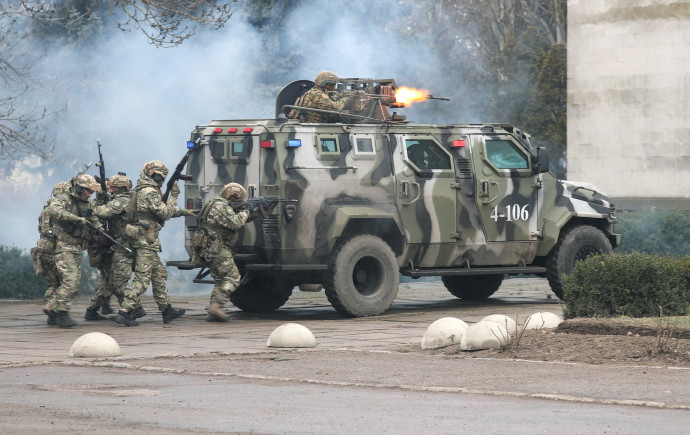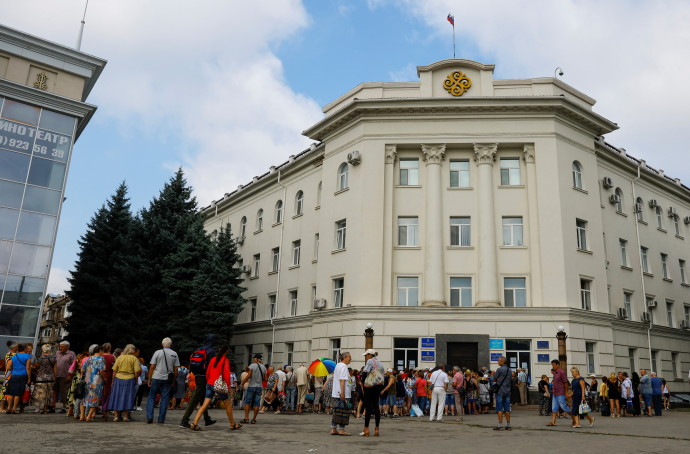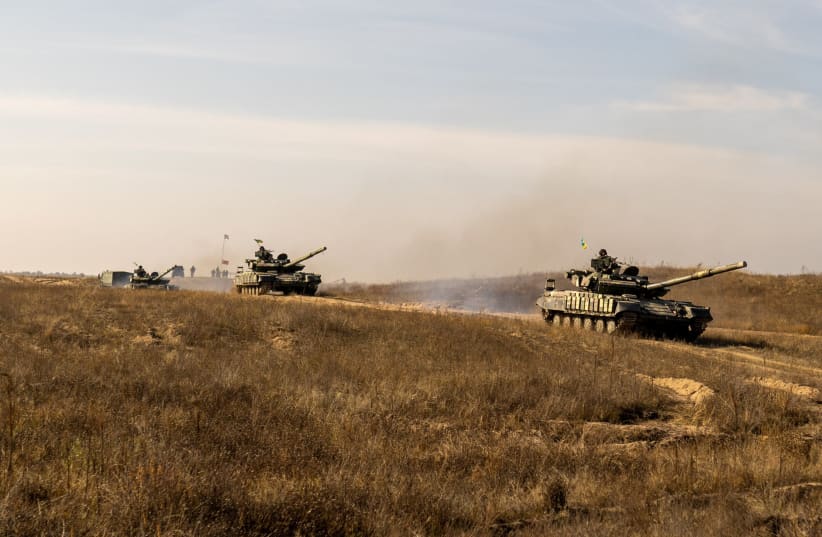Making their biggest breakthrough in the South since the war began, Ukrainian forces recaptured several villages in a tank-led advance along the west bank of the strategic Dnipro River on Monday, Ukrainian officials and a Russian-installed leader in the area confirmed.
Ukraine's President Volodymyr Zelensky said "there are new liberated settlements in several regions," without going into specifics about Ukraine's military advance.
According to Russian reports, Ukrainian forces reached all the way to Dudchany, 40 km from the established front lines before the Ukrainian counteroffensive, and into territories freshly annexed by Russia just last week.
“The information is tense, let’s put it that way, because, yes there were indeed breakthroughs,” Vladimir Saldo, the Russian-installed leader in occupied parts of Kherson, told Russian state television, according to Reuters.
“There’s a settlement called Dudchany, right along the Dnieper River, and right there, in that region, there was a (Ukrainian) breakthrough,” he said.
“There’s a settlement called Dudchany, right along the Dnieper River, and right there, in that region, there was a (Ukrainian) breakthrough,”
Vladimir Saldo

The Russian military acknowledged that Ukrainian armed forces had broken through Russian defenses in the Kherson region. It said the Ukrainian army and its “superior tank units” had managed to “wedge into the depth of our defense” around the villages of Zolota Balka and Alexsandrovka.
Russian Ministry of defense spokesperson Igor Konashenkov said Russian troops had occupied what he called a “pre-prepared defensive line”. They continued to “inflict massive fire damage” on Ukrainian forces, he claimed.
His comments are an admission that, two months after it began, Ukraine’s southern counter-offensive is making dramatic progress. Ukrainian forces achieved their biggest breakthrough in the region since the war started, advancing rapidly along the Dnipro River toward Kherson, the only provincial capital held by Russia.
The Russian military presence on the western bank of the Dnipro River creates a military threat to the Ukrainian cities of Mykolaiv and Odesa, as well as the rest of the country’s Black Sea coast.
Ukraine's goal is to push Russian troops to the east bank of the Dnipro in the Kherson region. And for Russia, this will be a significant defeat, according to Assistant Secretary of Defense of the US International Security, Celeste Wallander.
"It further distances Russia's desire to capture Odesa, which it stated as a goal in the theater. And this provides Ukraine with a better defensive position to reduce the intensity of fierce battles during the coming winter," Wallander explained.
Cutting off supply lines
The southern advance is targeting supply lines for as many as 25,000 Russian troops on the Dnipro's west bank. Ukraine has already destroyed the river's main bridges, forcing Russian forces to use makeshift crossings.
From the north-western side of the Kherson front, Ukrainian artillery has heavily damaged the Antonivsky Bridge, a vital link for Russian forces in the city.
A substantial advance downriver could cut them off entirely.
"The fact we have broken through the front means that...the Russian army has already lost the ability to attack, and today or tomorrow it could lose the ability to defend," said Oleh Zhdanov, a military analyst based in Kyiv.
"In terms of the significance as a logistics hub, by pushing or by the Russians, falling back into Kreminna and by denying them the use of that location as a hub, it impacts the ability to resupply forces along the ford line of troops," A senior military official of the US Department of Defense said in a briefing on Monday.
The advance along the Dnipro brings Ukrainian forces closer to the town of Nova Kakhovka, which is of strategic importance to Russia because it sits at the mouth of the canal that supplies the Russian-occupied Crimean Peninsula with fresh water.
The canal was shut down after Russia seized Crimea in 2014, and reopened only after Russia captured most of the Kherson region earlier this year.
Russian forces in the city of Kherson have started to block people from leaving and making lists of young men they want to mobilize to fight, according to Serhiy Khlan, a Ukrainian member of the Kherson regional council who is now in exile.

The importance of Kherson
Kherson is of considerable economic, symbolic and strategic value for Ukraine. Before the war, the region had a population of just over 1m people and was one of the largest hubs in Ukraine, the area also provides an access point from to Crimean peninsula to mainland Ukraine.
Kherson is among four regions which Russian President Vladimir Putin has annexed to be part of Russia, following so-called referendums held in the regions last week. Ukraine and the West denounced the results of the referendums as a "sham" and refused to recognize them.
While Russia doesn't effectively control any of the four regions fully, the Kherson oblast is the only one where they hold a provincial capital.
The loss of such an important city would prove to be the biggest military gain Ukraine would have since the beginning of the war, with the added effect of casting serious doubt on Vladimir Putin's claims of annexing the region.
Gaining a key southern city back from Russia would “prove to Ukraine’s Western backers that it can use all of the high-end weapons systems it’s been gifted to great effect,” Ed Arnold, a research fellow for European security at the British military think-tank RUSI, said.
If, however, Ukraine’s offensive in Kherson fails, Western backers may modify their objectives in Ukraine in favor of a “negotiated settlement” with Russia, according to Arnold.
As Europe heads toward winter, the end of what Arnold calls the “fighting season,” both sides will take time to replenish their forces and weaponry and rethink their longer-term strategy.
Ukrainian success in Kherson would lay the foundations for a “broader” counteroffensive in the spring, boosting morale and control in the south while reassuring allies of the Ukrainian army’s capabilities.
